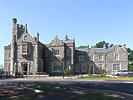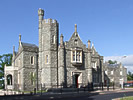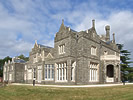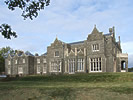Newport Houses - Malpas Court
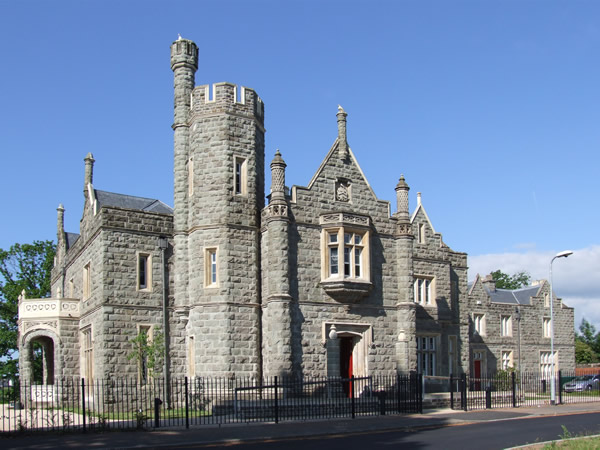
Malpas Court is a fine stone mansion set a few hundred metres off the Malpas Road on the northern fringe of Newport. It was built for Thomas Prothero between 1835 and 1838. The architect was Thomas Henry Wyatt and this was the first completely new mansion he designed. Though he was involved in the rebuilding of Llantarnam Abbey which like Malpas Court is gabled Tudor in style.
Nowadays the property is surrounded by houses and a large primary school. However to appreciate its former grandeur one needs to imagine the mansion set in landscaped parkland running down from the Malpas Road to the canal – the house being situated in the centre with fine views out over the canal.
The original drive followed roughly the same course as the present Whittle Drive, with a stone lodge at the top.
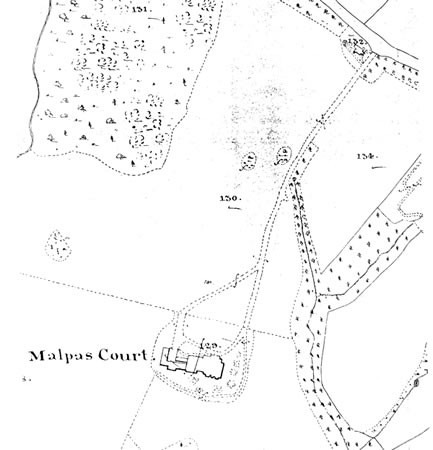
A section of the 1841 tithe map showing Malpas Court, drive and lodge.
Later a new drive was added, this left the Malpas Road a few hundred metres further south. It is said that the benefit of this approach was that the house was hidden on the first section of the drive and then would suddenly burst into view when close enough to make a grand impression.
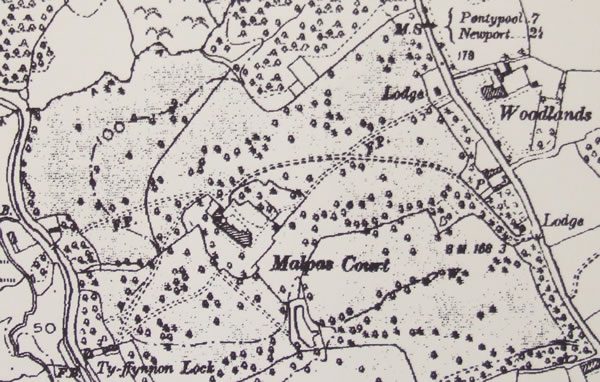
1902 OS Map
THE HOUSE
Part of the estate had formerly been owned by a branch of the Kemeys family - Sir Robert Jones Allard Kemeys, who was sheriff in 1820. It is thought that his house stood somewhere near the present north lodge and was a large red brick building in the Queen Anne style. This was demolished when the land was acquired by Thomas Prothero in 1833. Previously he had been living in The Friars, Belle Vue Lane, Newport.
The stone for Malpas Court was brought by canal from Breconshire. The rough rock faced Pennant sandstone walls form a pleasing contrast with the dressed Bath stone window facings and mullions. Only a few buildings were completed using this stone, as soon after Malpas Court was completed the Breconshire quarry was worked out.
THOMAS PROTHERO
Thomas Prothero was both wealthy and powerful. He started as a solicitor in Newport and became agent to the Morgan family of Tredegar Park. Then, as throughout his later career, he used position to gain influence and money. He became a landowner, one of the biggest exporters of coal in South Wales and was involved in many great projects of the time including the Monmouthshire and Brecon Canal. It’s easy to see why he had enemies. Most of these were easily silenced, because, as clerk of the council in Newport, he was responsible for the choice of jurymen and those people who might be subject to prosecution! However John Frost, a draper from Newport, could not be bought or silenced, despite two prison sentences for ‘slandering’ Prothero. Frost later headed the chartists as they marched down Stow Hill into Newport in 1839 in their ill fated protest. It seems likely that the animosity between Prothero and Frost was partly responsible for the direction the chartist leader’s life took. Indeed when Prothero got wind of the chartists plans to march en masse into Newport he went into hiding, only to come out when the uprising was over and Frost and other chartists were in prison. He then played a key part in their prosecution resulting in John Frost being sentenced to transportation for life.
Ironically Frost outlived Prothero. When he was given a free pardon in 1856 and returned to Britain, Thomas Prothero had been dead 3 years.
LATER OWNERS
Following Thomas Prothero’s death, the house passed to his son, Reverend T. E. Prothero, vicar of Malpas between 1862 and 1867. Then in the late 1880s Thomas Prothero’s grandson Mr Francis F. T. E. Prothero took over ownership.
In 1916 Leonard Wilkinson Llewellyn, a mining engineer and director of mining companies, became the new owner. He lived there until 1924 when he moved to Llanfrechfa Grange. After this the house appears to have been empty right up to 1939 when George Workman, a caretaker, is noted in Kelly’s local directory.
During the Second World War American troops occupied the house and over 100 Nissen huts were erected in the grounds.
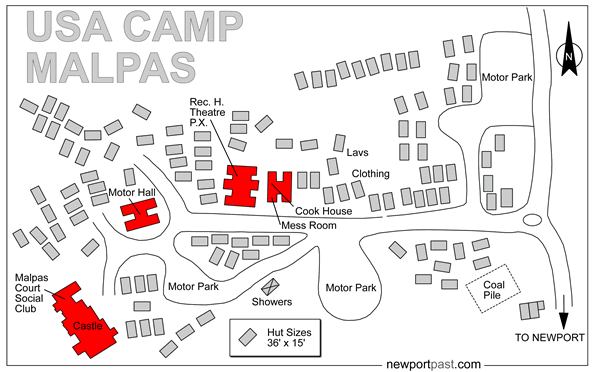
The US Camp at Malpas Court - redrawn from an original plan
After the war some of the huts were used for housing and one became a social club. Malpas Court itself was listed in Kelly's Directory as a Rest Centre.
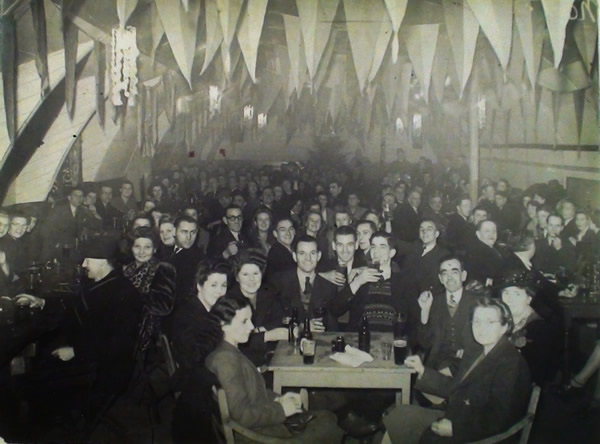
The original Malpas Court Club taken around 1947- a big celebration. Photo kindly sent by Bill Kinsey.
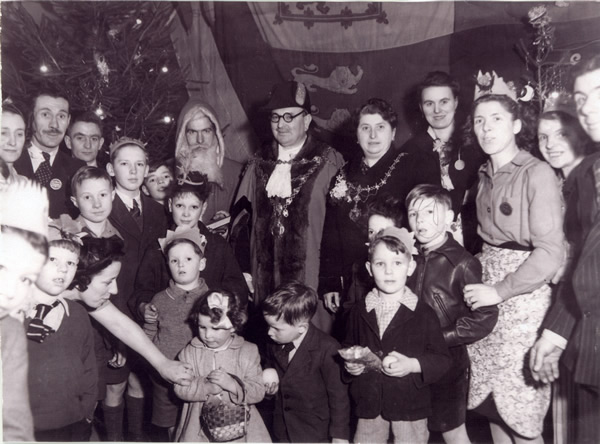
Christmas party at Malpas Court Social Club, around 1947. Photo kindly sent to us by Malcolm Periam.
For details visit our Photo Database
In 1946, Newport Borough Council bought Malpas Court and subsequently developed the grounds into a housing estate and school while the house became a social club. By the 1980s, only part of the premises was in use, as a betting shop, and the building had begun to decline into disrepair.
In 1997 Malpas Court become a Grade II listed building. Ten years later work began to return the house to its former glory. Grants of £2.7 million from the European Regional Development Fund (ERDF) and £750,000 from the Heritage Lottery Fund financed the project.
Can You Help?
We are keen to locate old photos of Malpas Court - particularly war-time ones. If you can help us please get in touch via the link below.
Feedback
Many thanks to Michele Lewis and Peter Capnos for their feedback.
Michele has contributed an interesting article about the GIs in Newport. Please follow this link.
Peter was born in South Lodge, Malpas Court, in 1938 and lived there until 1945. He has written his memories of these years in a fascinating article. Please follow this link.
